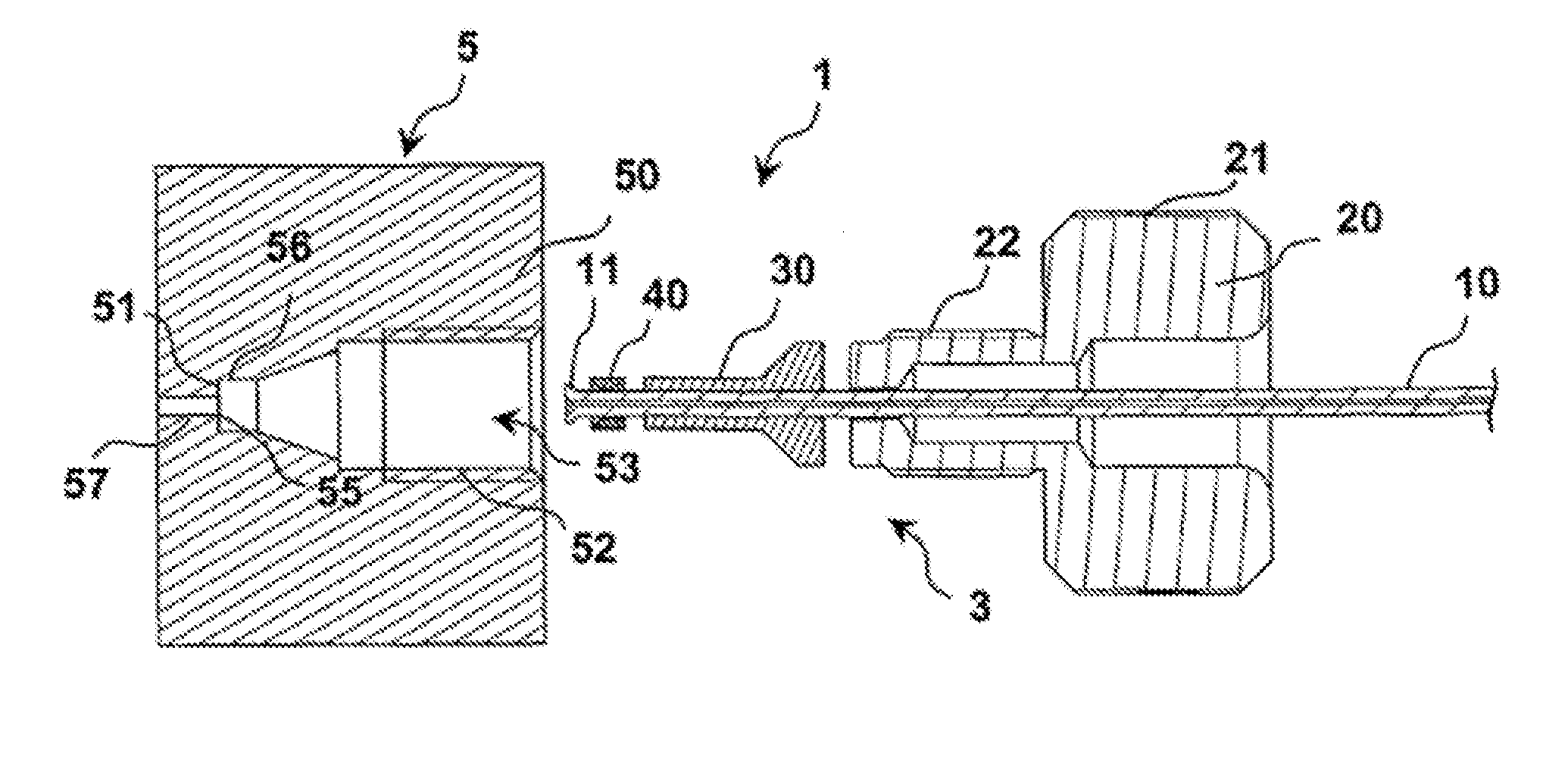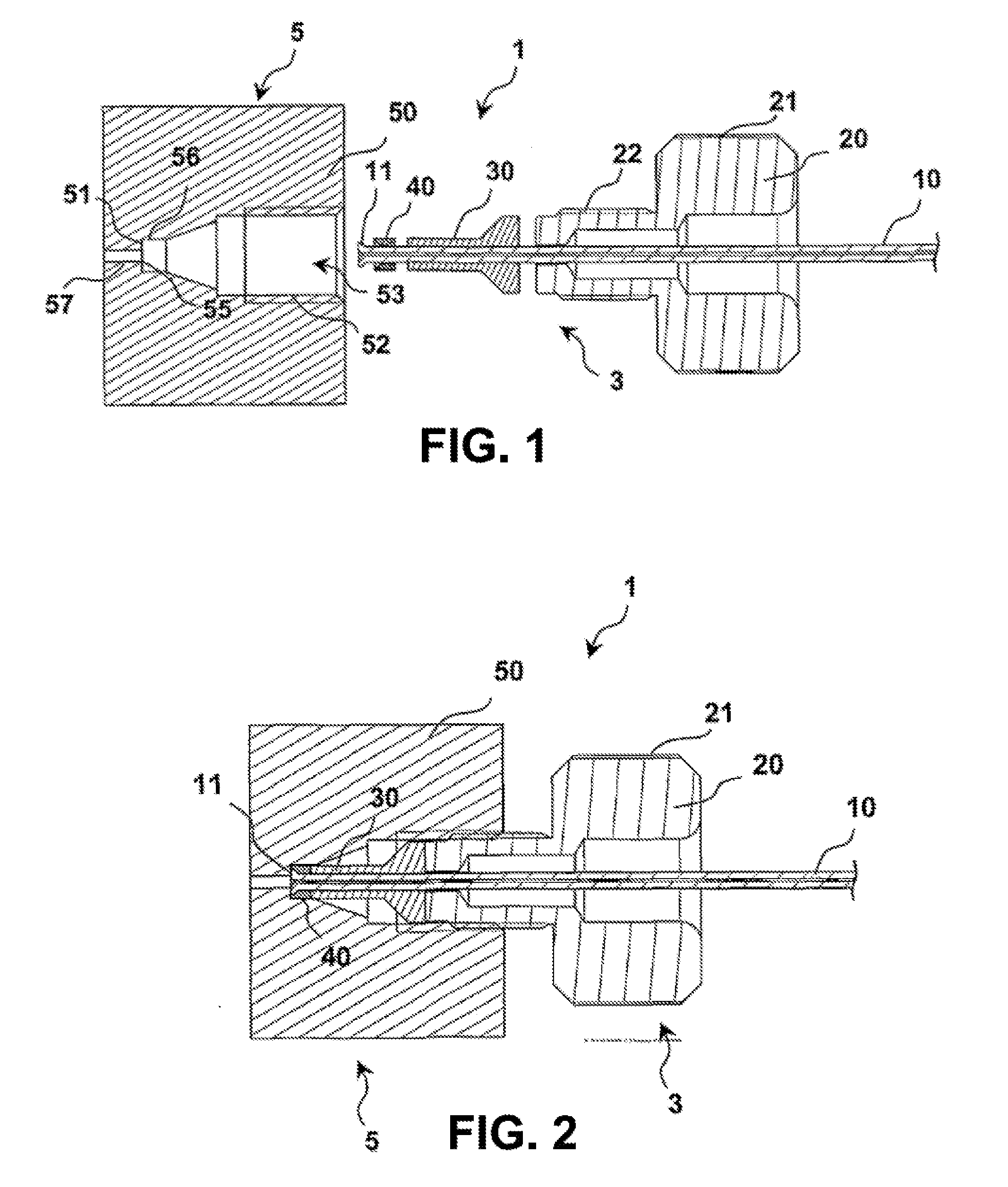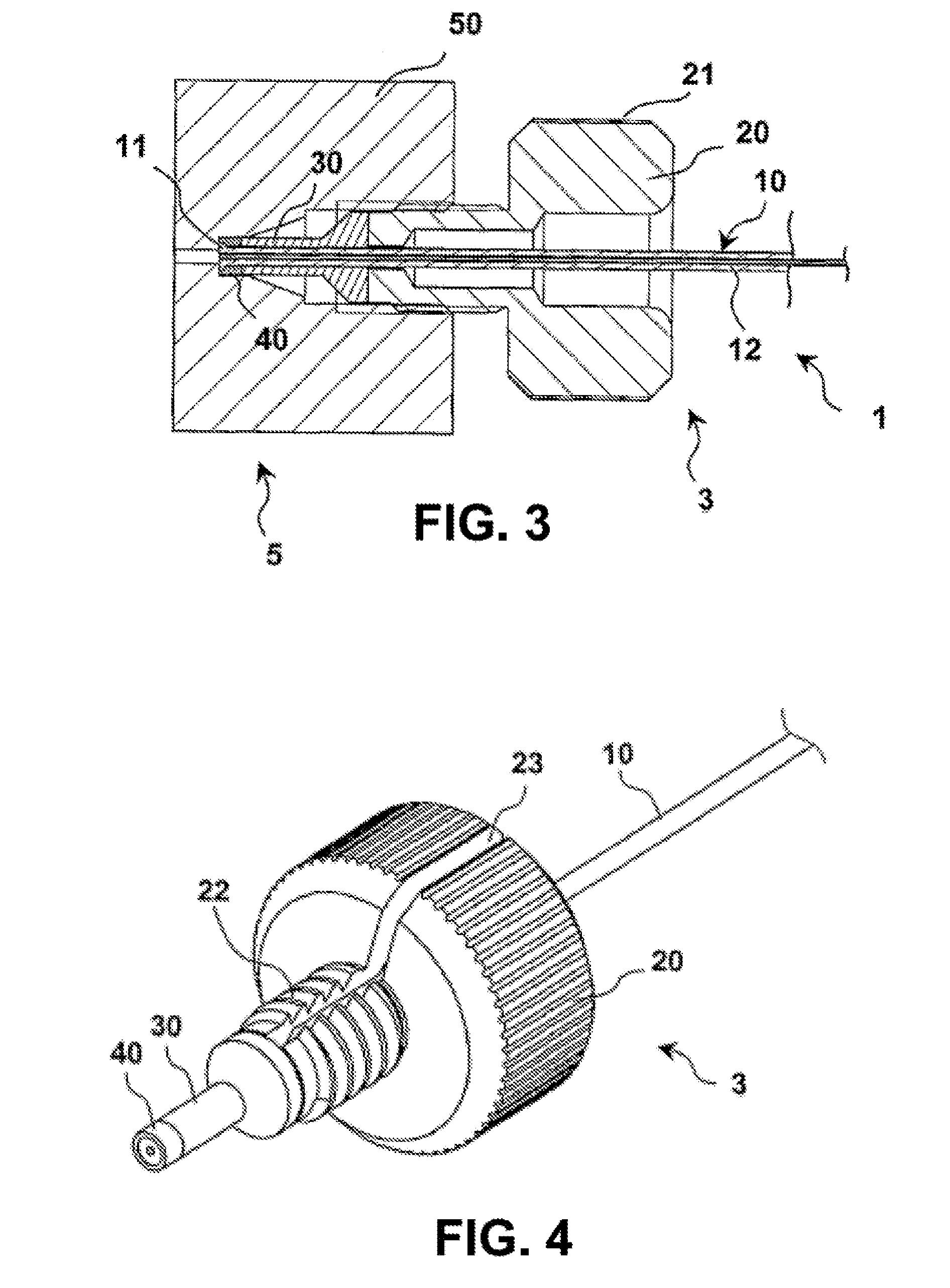Plug unit and connection system for connecting capillary tubes
a technology of capillary tubes and plug units, which is applied in the direction of branching pipes, components, instruments, etc., can solve the problems of undesired deformation, no longer being able to easily slip sealing elements onto the capillary tubes in the axial direction, and generating disadvantageous volum
- Summary
- Abstract
- Description
- Claims
- Application Information
AI Technical Summary
Benefits of technology
Problems solved by technology
Method used
Image
Examples
Embodiment Construction
[0035]The connection system 1 shown in the disassembled state in FIG. 1 comprises a bushing unit 5, which is shown only schematically with respect to its outer contours that are not relevant to the invention, and which can be arranged, for example, on a component of a system for high-performance liquid chromatography, such as, for example, on a separating column. In addition, the connection system 1 comprises a plug unit 3. For its part, the plug unit 3 comprises, a plug capillary tube 10 that can be made, for example, from stainless steel, a plug housing 20 depicted in the form of a screw, a pressure piece 30 that, just like the plug housing 20, can be made from stainless steel or another metal, and a sealing element 40 that can be made, for example, from a material, such as, a suitable plastic, that can deform sufficiently elastically and / or plastically.
[0036]The screw-shaped plug housing 20 has a thickened head part that is provided with knurling 21 on the outer periphery and tha...
PUM
 Login to View More
Login to View More Abstract
Description
Claims
Application Information
 Login to View More
Login to View More - R&D
- Intellectual Property
- Life Sciences
- Materials
- Tech Scout
- Unparalleled Data Quality
- Higher Quality Content
- 60% Fewer Hallucinations
Browse by: Latest US Patents, China's latest patents, Technical Efficacy Thesaurus, Application Domain, Technology Topic, Popular Technical Reports.
© 2025 PatSnap. All rights reserved.Legal|Privacy policy|Modern Slavery Act Transparency Statement|Sitemap|About US| Contact US: help@patsnap.com



